分科会概要
Overview of Working Group
分科会3
AIとロボットの共進化によるフロンティアの開拓
AIの一種であるディープラーニングがもつ限界(未知事象への対応が困難、機械学習に要する膨大なコスト・労力等)を打破することを目指し、自ら学習・発達するAI、デバイス消費電力の飛躍的な低減化、最適なアーキテクチャの在り方について検討することは急務である。さらに、ロボットとの融合研究により、ロボットの身体性を通じてAIが自律的に知識を習得・構造化し、外部環境に働きかけてフィードバックを得るとともに、現在のロボット技術の隘路・困難性を克服し、その活躍の場の拡大を図ることにより、フロンティアの開拓を目指すことも重要である。
本分科会では、AIが自律的に判断・制御を行うロボットの開発および活躍すべきフロンティア(宇宙空間、無人建設現場、災害現場等)の拡大に必要な革新的ソリューションとMS目標を検討する。
- 主 査:
- 福田 敏男
名城大学 理工学部 教授
- 副主査:
- 笠原 博徳
早稲田大学 理工学術院 教授
【関連する目標例】
- ・「2040年までに農林水産業の完全自動化を実現」
- ・「2040年までに建設工事の完全無人化を実現」
- ・「2050年までにノーベル賞級の発見を自律的に行うAI&ロボットシステムの開発」
- ・「2035年までに、宇宙空間で稼働する高機能・多自由度ロボット・人工衛星群の開発」
【登壇者一覧】
講演資料の無断転載・複製を禁じます
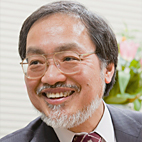
PROFILE
Toshio Fukuda graduated from Waseda University in 1971 and received the Doctor Engineering degree from the University of Tokyo, in 1977. Meanwhile, he studied at the graduate school of Yale University from 1973 to 1975. In 1977, he joined the National Mechanical Engineering Laboratory in Japan. From 1979 to 1980, he was a Visiting Research Fellow at the University of Stuttgart, West Germany. He joined the Science University of Tokyo in 1981, and then joined Department of Mechanical Engineering, Nagoya University, in 1989.
Dr. Fukuda is IEEE President-elect (2019), the IEEE Director of Division X, Systems and Control (2017-2018), IEEE Region 10 Director (2013-2014) and served President of IEEE Robotics and Automation Society (1998-1999), Director of the IEEE Division X, Systems and Control (2001- 2002), Co-founding Editor-in-Chief of IEEE / ASME Transactions on Mechatronics (2000-2002) and Editor-in-Chief of ROBOMECH Journal, Springer (2013-). He was Founding President of IEEE Nanotechnology Council (2002-2003, 2005).He was elected as a member of Science Council of Japan (2008-2013). Received IEEE Robotics and Automation Pioneer Award (2004), IEEE Robotics and Automation Technical Field Award (2010), the Medal of Honor for the Purple Ribbon (2015) and Chunichi Culture Award (2019).
笠原 博徳 (分科会副主査)/ Professor, Faculty of Science and Engineering, Waseda University
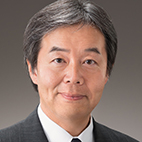
PROFILE
1985 Ph.D. , Dept. EE, WASEDA Univ.
1985Visiting Scholar: University of California, Berkeley,
1989-90 Research Scholar: University of Illinois, Urbana-Champaign, Center for Supercomputing R&D,
2004 Director, Advanced Multicore Research Institute,
2017 member:the Engineering Academy of Japan and the Science Council of Japan
2018 IEEE Computer Society President
2018 Nov. Senior Executive Vice President, WASEDA Univ.
Rodney Allen Brooks / Panasonic Professor of Robotics (emeritus), the Massachusetts Institute of Technology
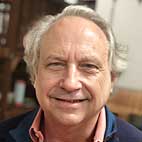
PROFILE
Rodney Brooks received a Ph.D. in Computer Science from Stanford University in 1981. He held research positions at CMU and MIT, and then a faculty position at Stanford. He was on the active faculty of MIT from 1984 until 2010, where he was Director of the MIT Artificial Intelligence Lab, and then the founding Director of the MIT Computer Science and Artificial Intelligence Laboratory (CSAIL). He was founding co-editor (with Takeo Kanade) in 1987 of the International Journal of Computer Vision. He was co-founder of iRobot (maker of the Roomba) in 1990, of Rethink Robotics in 2008, and of Robust.AI in 2019. He is an elected member of the US National Academy of Engineering and of the American Academy of Arts and Sciences, and is a Fellow if IEEE, ACM, AAAI, and AAAS. He won the 1991 Computers and Thought Award at IJCAI, the 2008 IEEE Inaba Award for Technical Innovation Leading to Production, the 2014 Robotics Industry Association's Engelberger Robotics Award for Leadership and the 2015 IEEE Robotics and Automation Award.
Alois Knoll / Full Professor, Chair of Robotics, AI, and Embedded Systems, Technical University of Munich
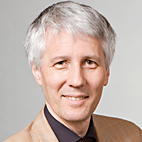
PROFILE
Prof. Alois C. Knoll is a German computer scientist and has been a full professor at the Faculty of Computer Science at the Technical University of Munich since 2001. He teaches and conducts research in the fields of autonomous systems, robotics and artificial intelligence.
Between 2007 and 2009, he was a member of the EU's highest advisory board for information technology ISTAG. He was involved in the development of the EU flagship projects, and was one of the authors of the report “European Challenges and Flagships 2020 and Beyond”.
In 2009, he co-founded “fortiss”, the Munich Institute for Software and Systems, which, due to its success, has since been transformed into a state institute of the State of Bavaria.
He coordinated the EU project ECHORD++, a major initiative with the aim of bringing new robot technology to market maturity. Since 2013, he has been head of the sub-project “Neurorobotics” of the Human Brain Project. Since 2015, he has been director of software development, i.e., one of three scientific directors of the HBP.
He is a senior member of the IEEE, a member of the German Society of Informatics and a Fellow of the School of Engineering of the University of Tokyo (2010).
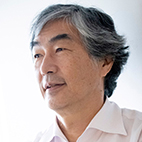
PROFILE
Dr. Hideyuki Nakashima received his Ph. D. in Information Engineering at the University of Tokyo in 1983, and joined ETL (Electrotechnical Laboratories). From 2001 to 2004, he was the director of Cyber Assist Research Center of AIST (National Institute of Advanced Institute for Industrial Science and Technology). From 2004 to 2016, he served as the president of Future University Hakodate. From 2016 to 2018, he was a project professor at the University of Tokyo. In 2018, he moved to the current position. He is also a President Emeritus of Future University Hakodate.
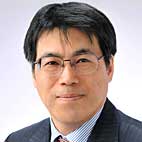
PROFILE
Naoki Shinohara received the B.E. degree in electronic engineering, the M.E. and Ph.D (Eng.) degrees in electrical engineering from Kyoto University, Japan, in 1991, 1993 and 1996, respectively. He was a research associate in the Radio Atmospheric Science Center, Kyoto University from 1996. From 2010, he has been a professor in Research Institute for Sustainable Humanosphere, Kyoto University. He has been engaged in research on Solar Power Station/Satellite and Microwave Power Transmission system. He was IEEE MTT-S Distinguish Microwave Lecturer (2016-2018) and is IEEE senior member, IEEE MTT-S Technical Committee 26 (Wireless Power Transfer and Conversion) chair, IEEE MTT-S Kansai Chapter TPC member, IEEE Wireless Power Transfer Conference advisory committee member, URSI Commission D vice chair, international journal of Wireless Power Transfer (Cambridge Press) executive editor, technical committee member and 1st chair of IEICE Wireless Power Transfer Technical Committee, Japan Society of Electromagnetic Wave Energy Applications president, Space Solar Power Systems Society vice chair, Wireless Power Transfer Consortium for Practical Applications (WiPoT) chair, and Wireless Power Management Consortium (WPMc) chair. His books are “Wireless Power Transfer via Radiowaves” (ISTE Ltd. and John Wiley & Sons, Inc., “Recent Wireless Power Transfer Technologies Via Radio Waves (ed.)” (River Publishers), and “Wireless Power Transfer: Theory, Technology, and Applications (ed.)” (IET), and some Japanese text books of WPT.





